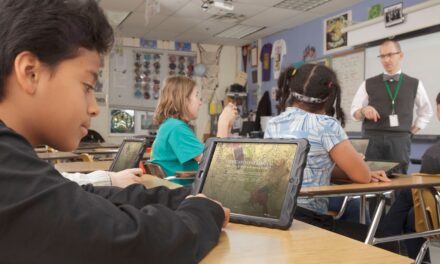The 2018 American Educator Panel survey asked teachers where they would turn first to find an intervention to help students struggling academically and non-academically. For more than half of respondents, colleagues were a top resource, although which colleagues they choose depends on the type of help sought.
For 56% of teachers, school leaders and support staff were the first place they’d turn for assistance with non-academic needs, yet only 22% of teachers chose school leaders and support staff as the top resource for academic needs. When it comes to academic needs, other teachers were the top choice, with 34% of teachers choosing these colleagues as their favored source. Smaller percentages of teachers said they’d develop their own resources, search the Internet, consult print and digital resources, or seek help through social media. Principals surveyed agreed that teachers should consult colleagues for assistance.
When asked what factors were most important when choosing an intervention, 78% of teachers and 76% of principals rated applicability to their own school and students as very important. This ranked above rigor of evidence (selected by 70% of principals and 55% of teachers); ease of access (53% of principals and 61% of teachers); ease of implementation (52% of principals and 61% of teachers); and affordability (49% of principals and 44% of teachers). Interestingly, given other results, personal word of mouth was ranked relatively low, with 16% of principals and 24% of teachers selecting it as very important.
Source: Hamilton, L.S. & Hunter, G.P. (2019). Where do educators turn to address instructional and behavior challenges? Santa Monica, CA: RAND.












